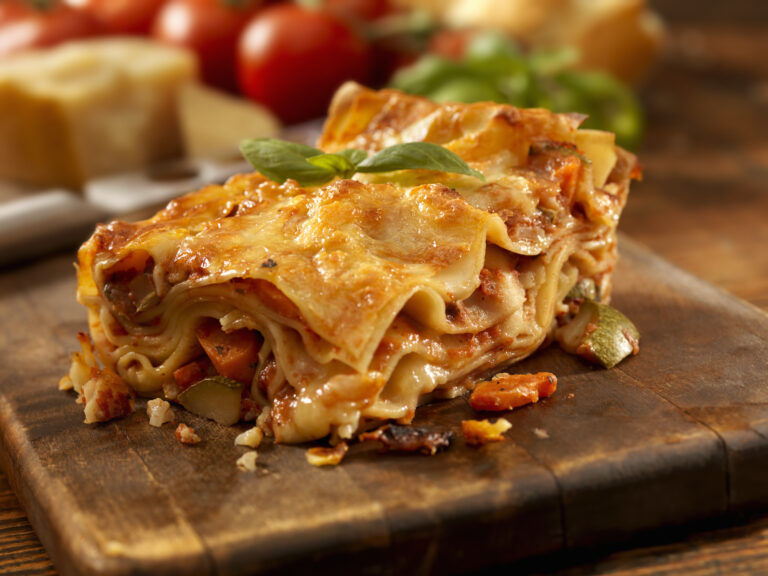¿Te estás preguntand cómo colocar las capas de tu lasaña de la manera correcta?Estos son nuestros 20 mejores consejos para preparar lasaña en capas, asegurándote de que cada bocado esté lleno de sabor. ¡Hagamos de tu lasaña la comidilla de la mesa!
Secretos de la salsa

Cuando se trata de dominar las capas de lasaña, el secreto está en una salsa que se deja hervir a fuego lento, desarrollando sabores que se combinan perfectamente entre las láminas de pasta.
No se trata sólo de los ingredientes. Se trata del tiempo y el amor que le pones. Una salsa bien cocida a fuego lento puede hacer que su plato pase de bueno a inolvidable.
Es esta rica base la que respalda el delicado equilibrio del queso, la pasta y los rellenos. ¡Conseguir ese sabor a fuego lento durante horas puede ser más fác
La lógica de las capas

¿Te preguntas cómo hacer capas de lasaña como un profesional? Todo empieza y termina con la salsa. Esta no es sólo una sugerencia picante: es el secreto de la lasaña perfecta.
Al comenzar con salsa en el fondo del plato, evitas que la pasta se pegue. ¿Y terminar con salsa encima? Ésa es tu barrera contra la humedad.
Eso es todo lo que hay que hacer: salsa, pasta, rellenos, queso, repetir. Este método no se trata sólo de tradición; se trata de crear una obra maestra culinaria que sea deliciosa y visualmente atractiva.
El queso
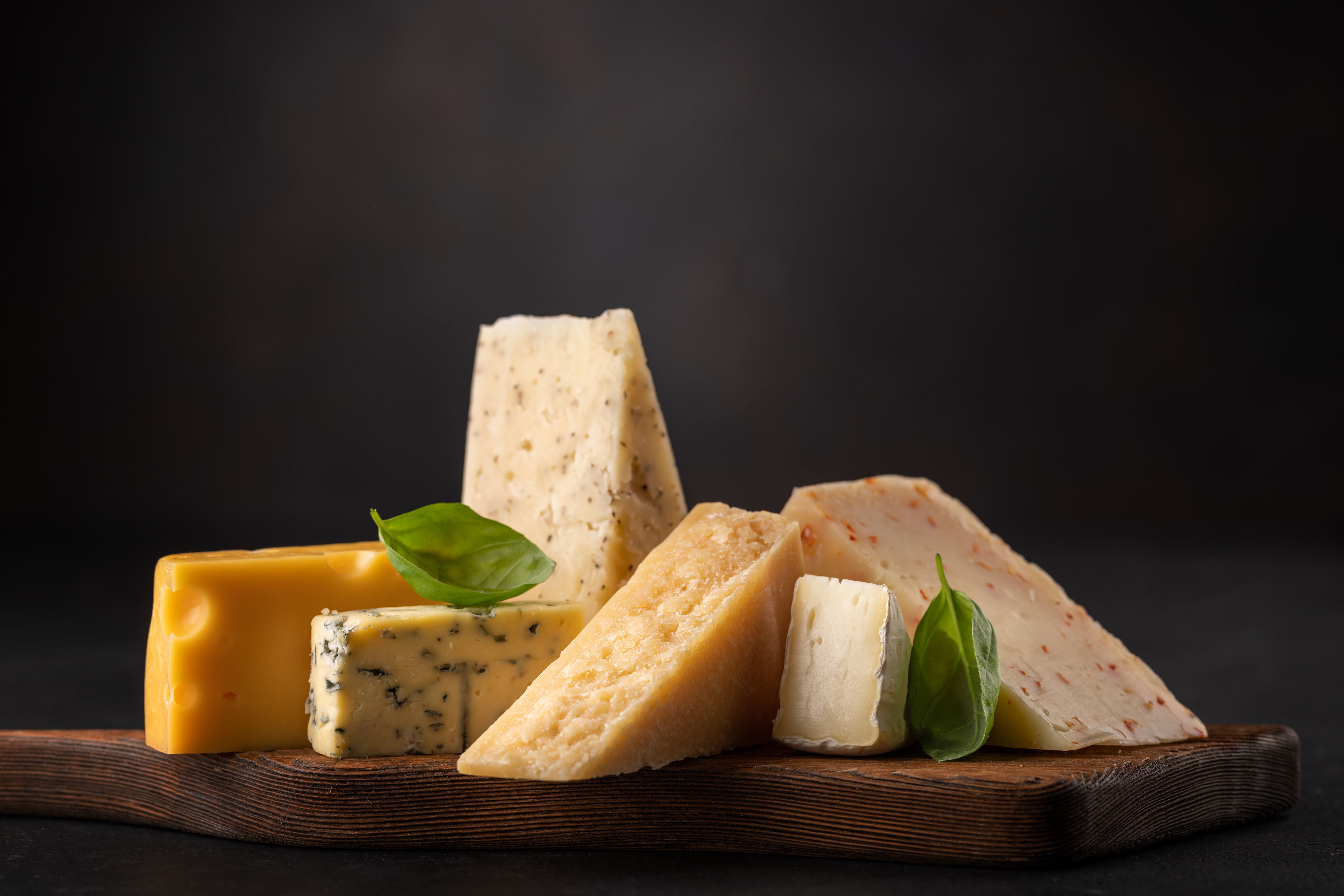
Si quieres saber cómo colocar lasaña en capas, un consejo clave es no evitar mezclarla con quesos. Claro, la mozzarella es la opción preferida.
Pero no querrás escatimar en ricotta. Y el parmesano, con su perfil salado y de nuez, puede agregar una profundidad inesperada. Una pizca entre capas transforma el plato.
¿Te sientes aventurero y quieres probar algo nuevo? Invita al gorgonzola tu fiesta de lasaña. Sus notas atrevidas y picantes pueden hacer que la lasaña pase de ser familiar a gourmet.
Los fideos para las capas

Elegir entre fideos tradicionales y o aquellos que no necesitan hervirse para las capas de lasaña puede parecer una encrucijada culinaria. Entonces, ¿qué opción es mejor para lograr la mejo lasaña?
Si te inclina por los fideos sin hervir, estáa apuntando a un bocado más firme y un tiempo de preparación más rápido. Perfecto para aquellos que aman un poco más de textura.
Para aquellos que prefieren cocinar previamente, hervir los fideos ofrece esa sensación de lasaña clásica y reconfortante. Requiere un poco más de mano de obra, pero bueno, vale la pena.
Los vegetales

¿Alguna vez te has preguntado cómo colocar lasaña en capas para que cada bocado sea una delicia repleta de verduras? Comience salteando sus verduras favoritas, como espinacas o calabacines. ¡Agregue también algunos champiñones!
Los champiñones aportan una textura carnosa y una profundidad terrosa que complementa maravillosamente el queso y la pasta. Saltearlos primero realza su sabor para obtener una lasaña verdaderamente extraordinaria.
El secreto de una lasaña vibrante reside en las sabrosas verduras. Agregar capas de vegetales salteados no solo aumenta el valor nutricional sino que también crea una obra maestra colorida.
La carne molida

Elegir la carne adecuada para las capas de lasaña es crucial, ya sea la carne molida más jugosa, la salchicha más picante o incluso una alternativa sustanciosa a base de plantas.
Sazonar la carne que elijas correctamente puede empeorar o mejorar tu lasaña. Una pizca de sal y una pizca de hierbas italianas pueden elevar el sabor a nuevas alturas.
Cocinar la carne a la perfección antes de unirla a la lasaña también es clave. Ya sea que esté dorando carne de res o cocinando salchichas a fuego lento, es esencial hacerlo bien.
Las especias
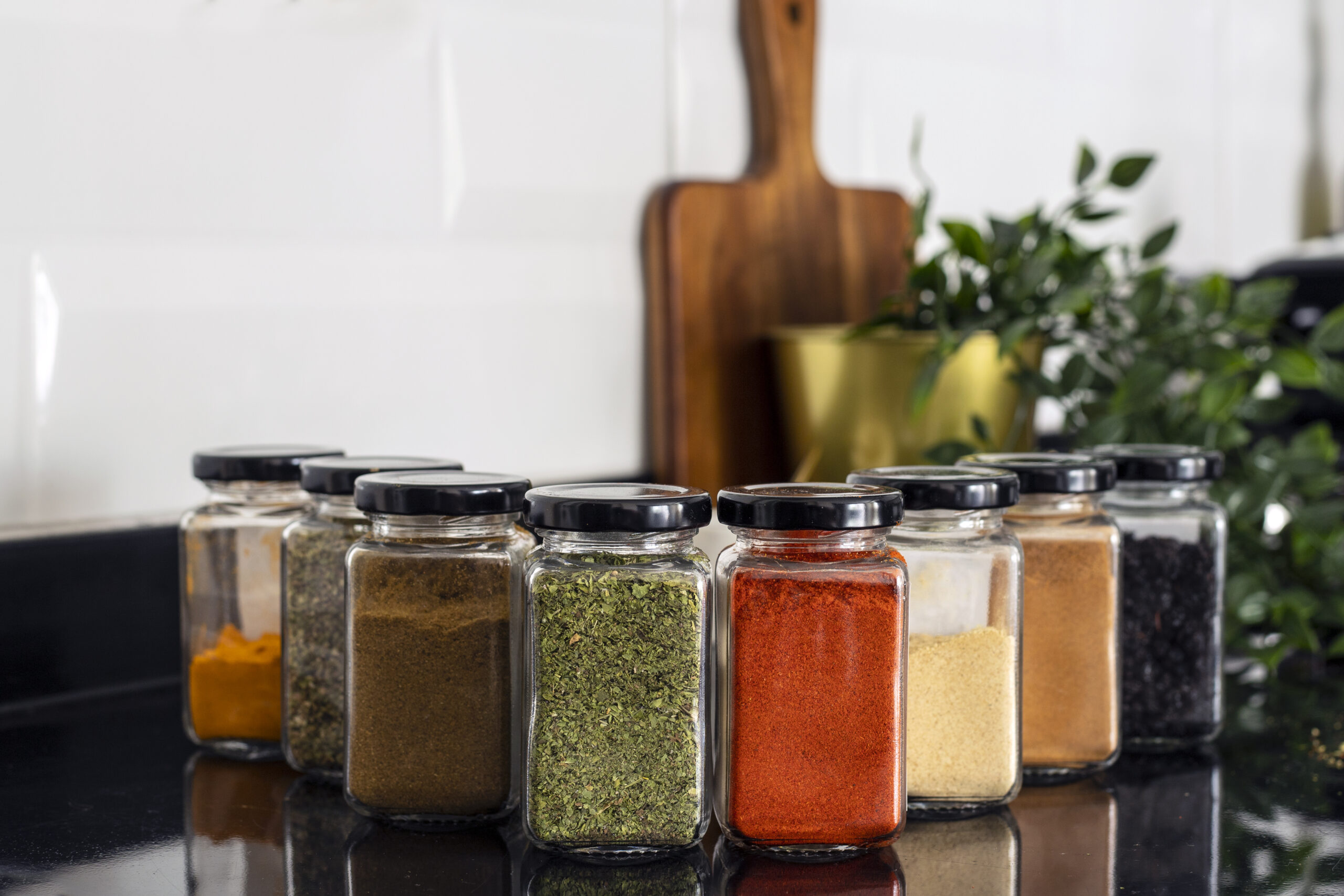
Al aprender a preparar lasaña en capas, la magia está en los detalles. Incorporar hierbas como orégano, albahaca y tomillo a su salsa no solo agrega sabor.
¡También crea una deliciosa mezcla de aromas en tu cocina! Y no pase por alto el poder de un pellizco. Un toque de nuez moscada puede transformar el plato.
¡Así es! La nuez moscada espolvoreada entre capas agrega una calidez sutil que complementa el queso. Son estos pequeños toques los que elevan una buena lasaña a excelente.
Cuándo y cómo condimentar
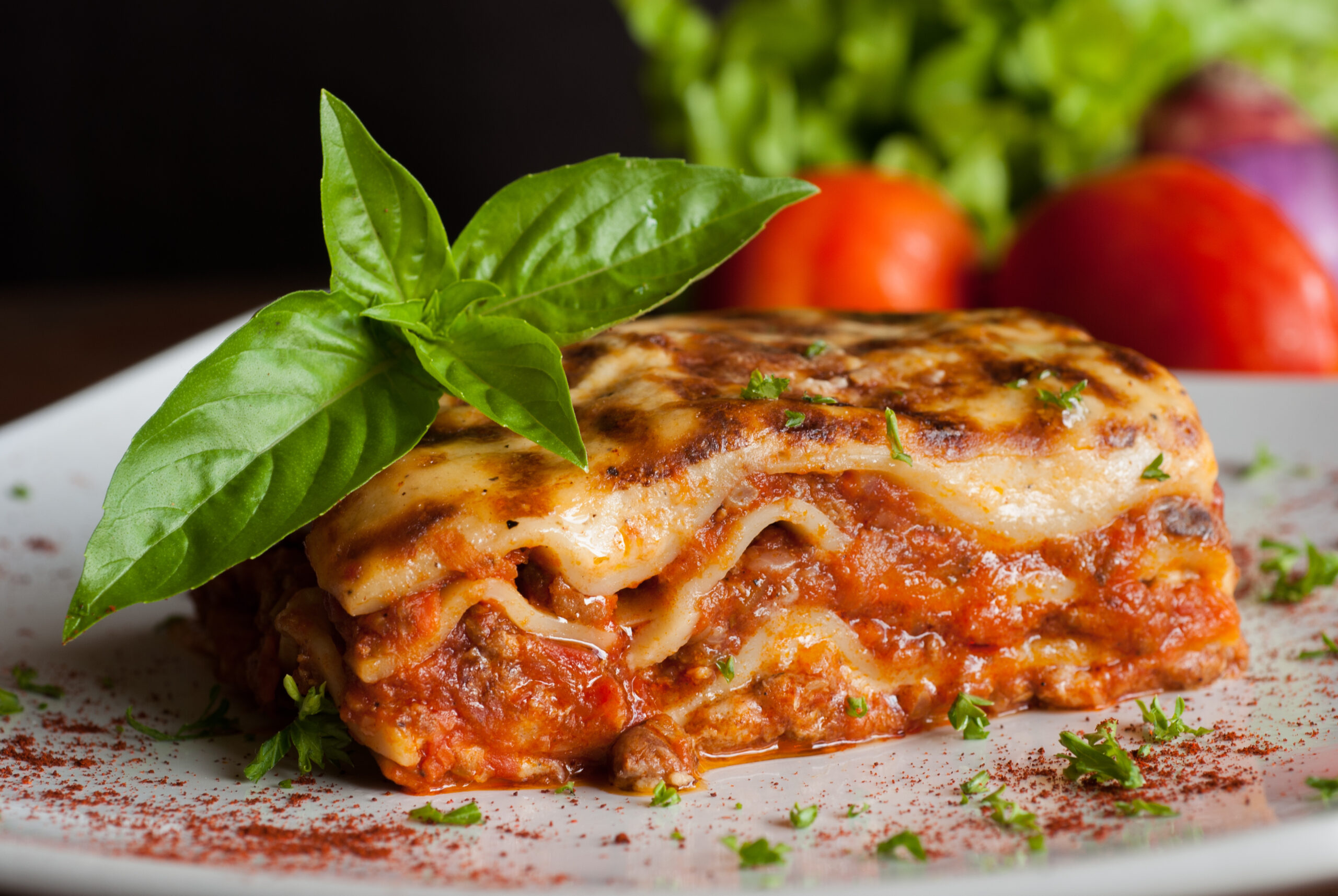
Además de elegir las especias y condimentos adecuados, es necesario saber cómo incorporar esas picantes especias. El truco consiste en sazonar cada capa.
Esto significa agregar una pizca de magia (sal, pimienta y las hierbas elegidas) a cada capa a medida que construye. El condimento en etapas permite que cada capa cante con sabor.
Ya sea albahaca y orégano entre la salsa o una pizca de ajo en polvo sobre la ricota, estos pequeños toques marcan una gran diferencia.
Evitar la humedad
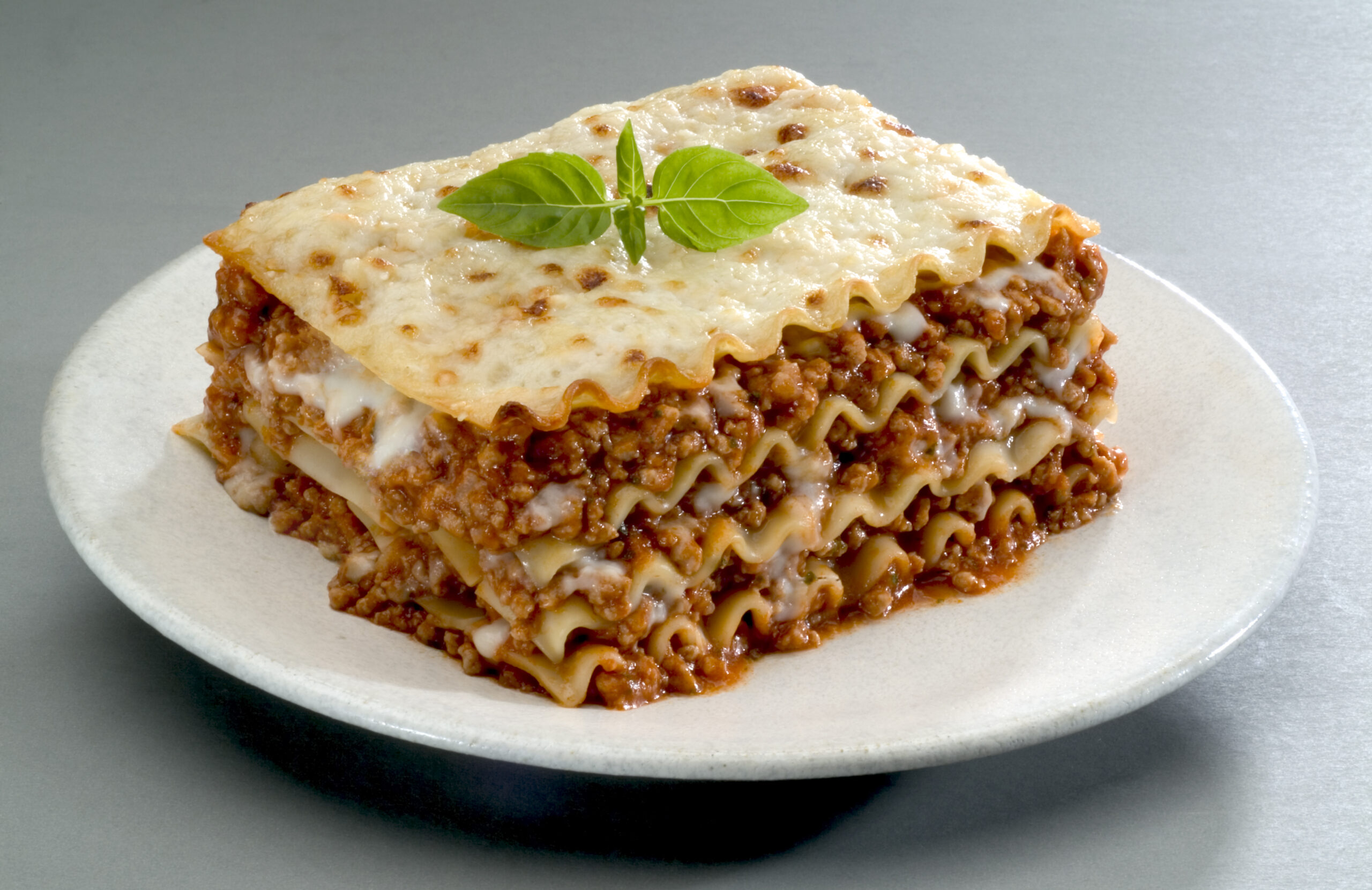
¿Cómo puedes decir adiós a los problemas de lasaña acuosa o húmeda por demás? Asegúrate de que tus verduras estén tan secas como un día de verano en Sicilia antes de colocarlas en capas en su lasaña.
Y nada humedece las bebidas espirituosas (y lasaña) como las carnes empapadas. Antes de que debuten en tu plato, déjalas reposar después de cocinarlas y escurre el exceso de jugo.
Finalmente, la selección de la salsa puede mejorar o deshacer la textura de la lasaña. Una salsa un poco más espesa se adhiere a los fideos y al relleno, creando una obra maestra cohesiva y no empapada.
Tips básicos para el horneado

Dominar el arte de la lasaña no se trata solo de las capas. También se trata de mantenerla húmeda y deliciosa durante todo el proceso de horneado. ¿Como lograr eso?
Cubrir la lasaña con papel de aluminio durante parte del tiempo de horneado atrapa la humedad en el interior, lo que garantiza un resultado delicioso en todo momento. ¡Adiós lasaña seca y dura!
Pero no olvidemos el gran final: la supreficie irresistiblemente dorada. Destapa la lasaña en los últimos minutos de horneado para que el queso quede crujiente.
Reposo y revelación
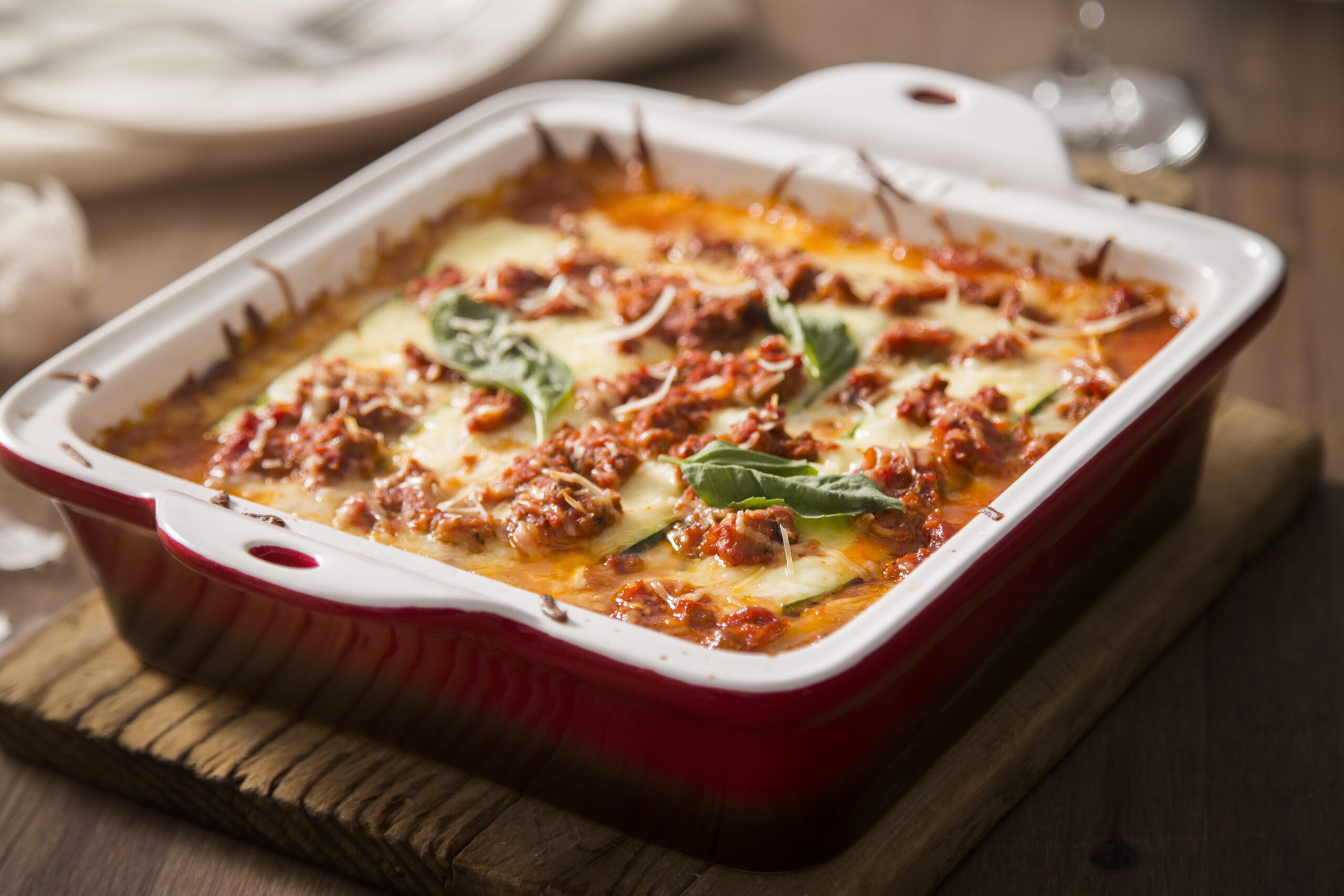
Ever wondered why your lasagna layers slide off the spatula like a ski slope? Patience is key. Allowing your masterpiece to rest after baking is a cardinal rule.
Because let’s be real, no one wants a lasagna that’s more soup than solid. Giving it time to rest lets the layers settle and the flavors meld.
Resting it allows everything to thicken up, ensuring that when you do cut into it, you’re greeted with beautifully defined layers that stand tall on your plate.
La cremosidad
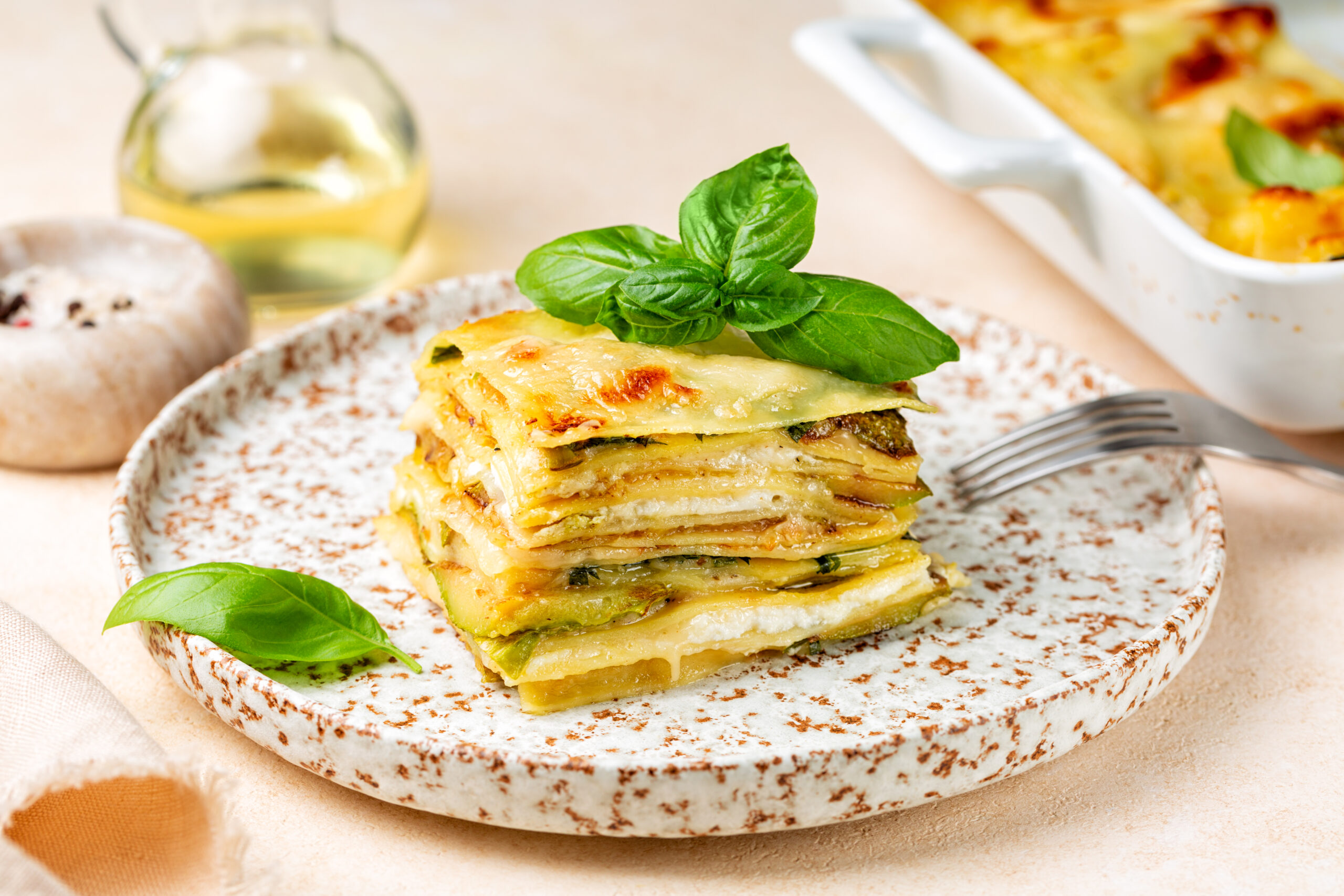
¿Alguna vez te has preguntado cómo colocar capas de lasaña para lograr esa textura perfecta y cremosa en cada bocado? Una capa de bechamel es tu arma secreta en el campo de lasaña.
Esta rica salsa blanca se combina a la perfección con los quesos, aportando una cremosidad lujosa a la que es difícil resistirse. Incorporar una salsa bechamel a tu lasaña es un verdadero cambio de juego.
Dominar el arte de colocar capas de lasaña con bechamel no es ciencia espacial, pero seguramente eleva tu plato al estatus de gourmet. Su deliciosa cremosidad añade un toque elegante.
La corteza crujiente
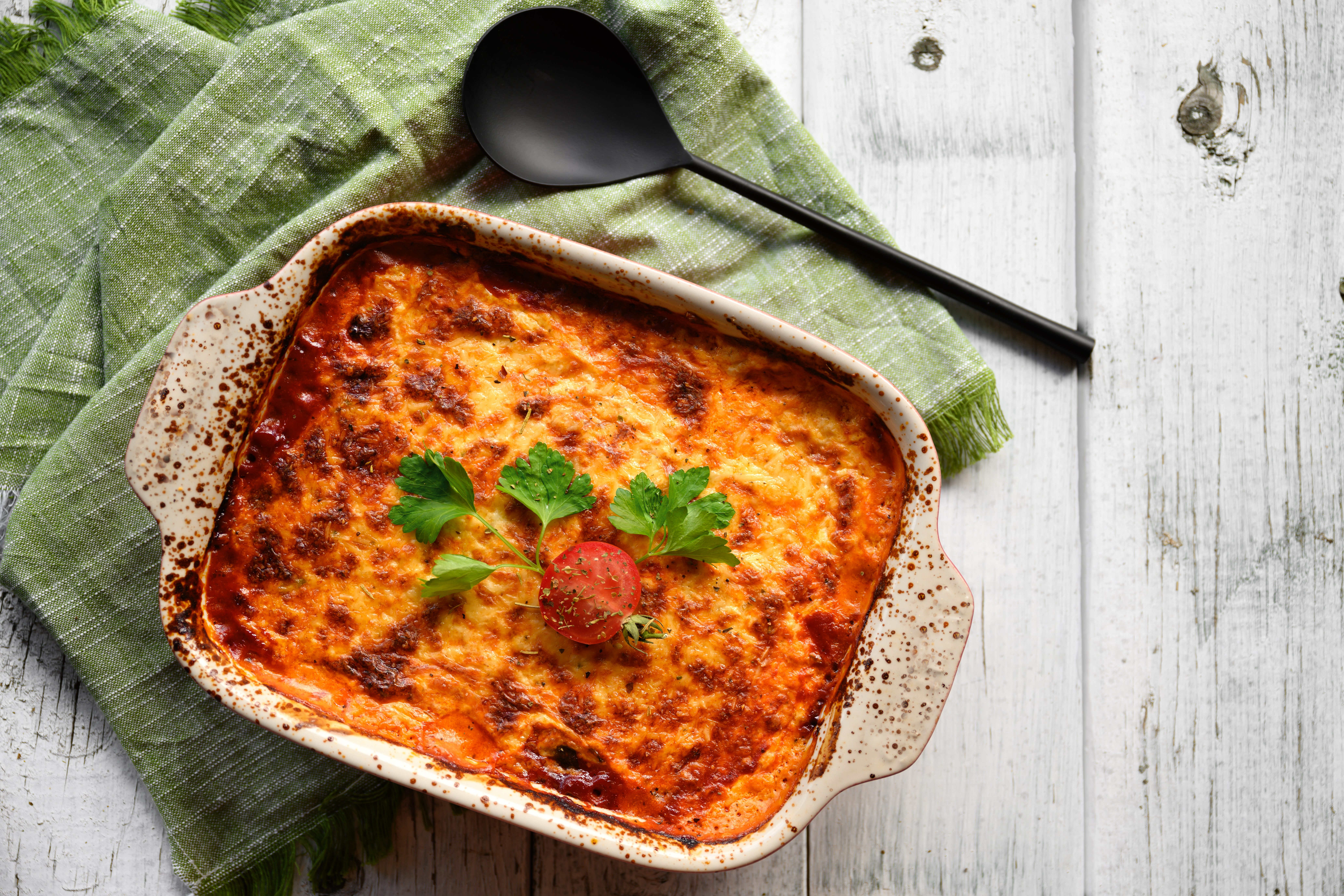
¡Lograr esa corteza crujiente irresistible en tu lasaña realmente puede elevarla de buena a excelente! El secreto está en la capa final. Entonces, ¿cuál es el truco?
Espolvoreq generosamente una mezcla de parmesano rallado y pan rallado encima antes de hornear. A medida que se cocina la lasaña, esta capa se transforma en una cobertura dorada y crujiente.
Ofrece un delicioso contraste con las tiernas y pegajosas capas que se encuentran debajo. Para darle un toque extra crujiente, también puedes asar la lasaña durante los últimos minutos.
El tamaño
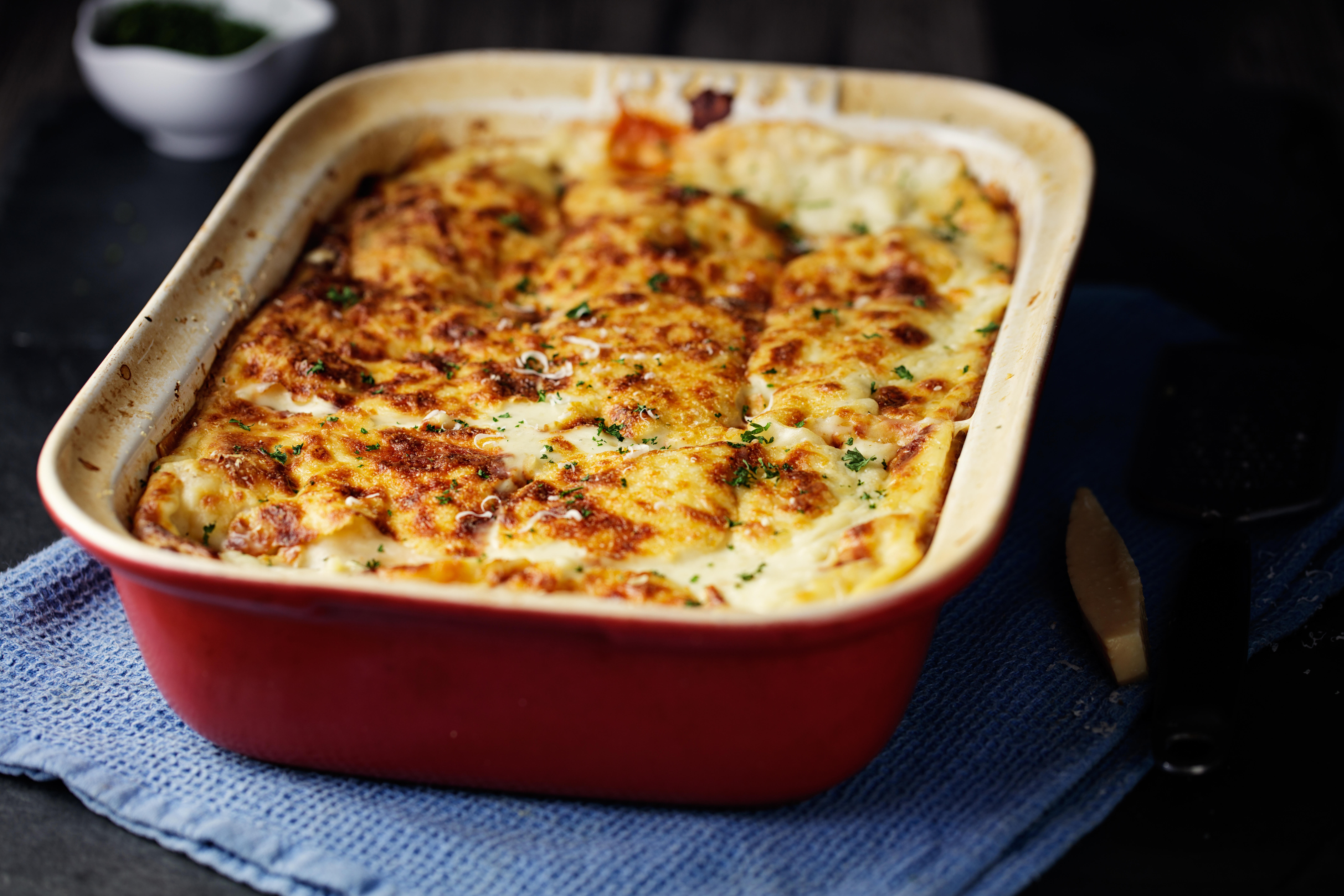
¿Alguna vez te has preguntado por qué a tu lasaña le falta ese factor sorpresa? ¡Podría ser tu elección de recipiente! Un plato más profundo puede marcar la diferencia.
Más espacio en el recipiente significa más capas y, cuando se trata de lasaña, más capas significa más sabor. Es una ecuación simple para un resultado espectacular.
Un recipiente más profundo también favorece una cocción uniforme, asegurando que la capa intermedia de ricotta esté tan tibia y pegajosa como la cobertura de mozzarella con queso.
Lograr el balance entre la masa y la salsa
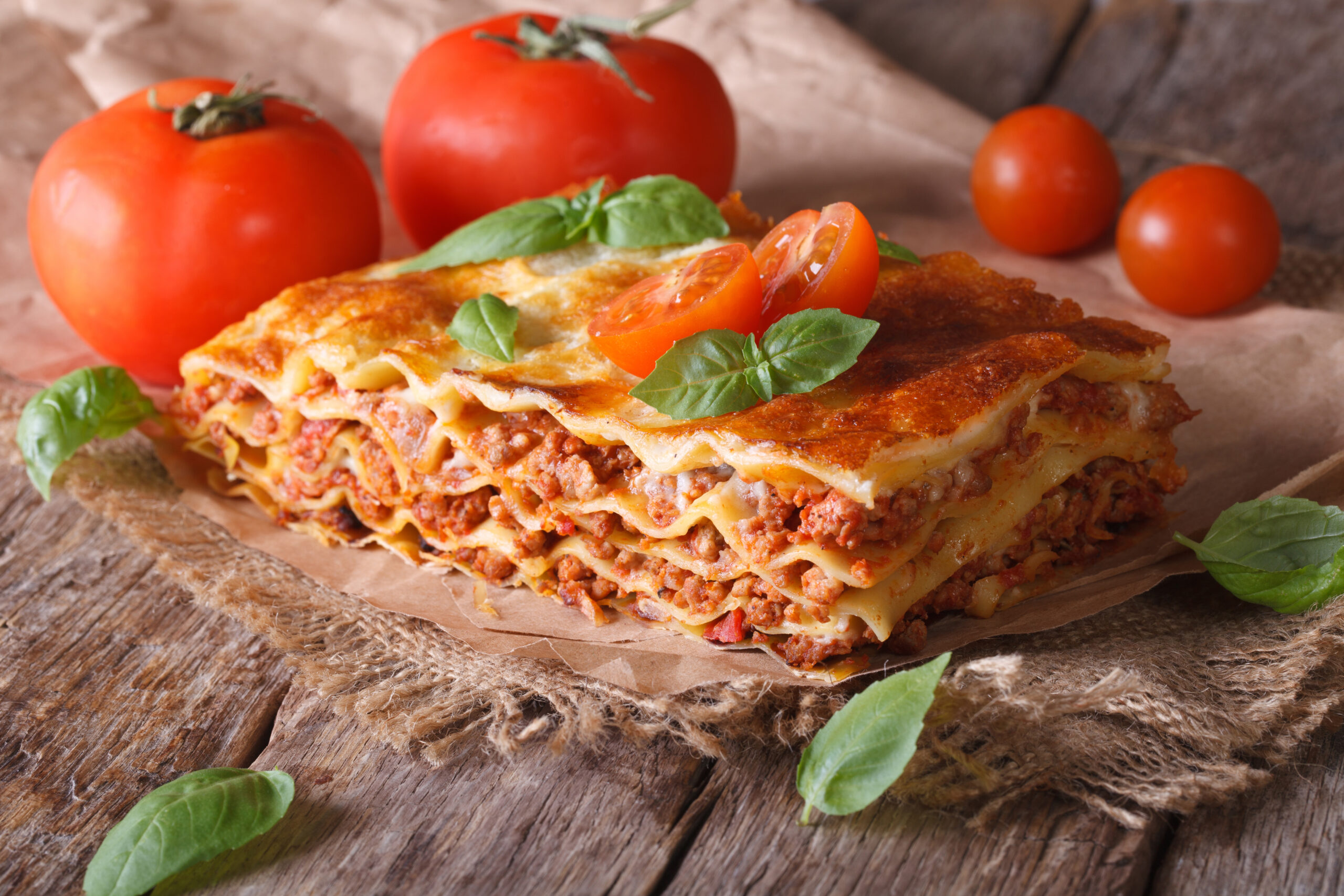
Obtener la proporción correcta de salsa y los “fideos” es como encontrar la armonía perfecta en una canción. Cuando estés aprendiendo a preparar lasaña en capas, recuerda que todo es cuestión de equilibrio.
Imagina cada capa de tu lasaña como un capítulo de una historia. Cada capítulo necesita la combinación adecuada para mantener a los lectores (o, en este caso, a los comensales) interesados.
El truco consiste en esparcir cada capa con cuidado, asegurándose de que cada bocado sea una combinación perfecta de sabores y texturas. Después de todo, ¿no es la lasaña sólo un arte comestible?
Capas finas
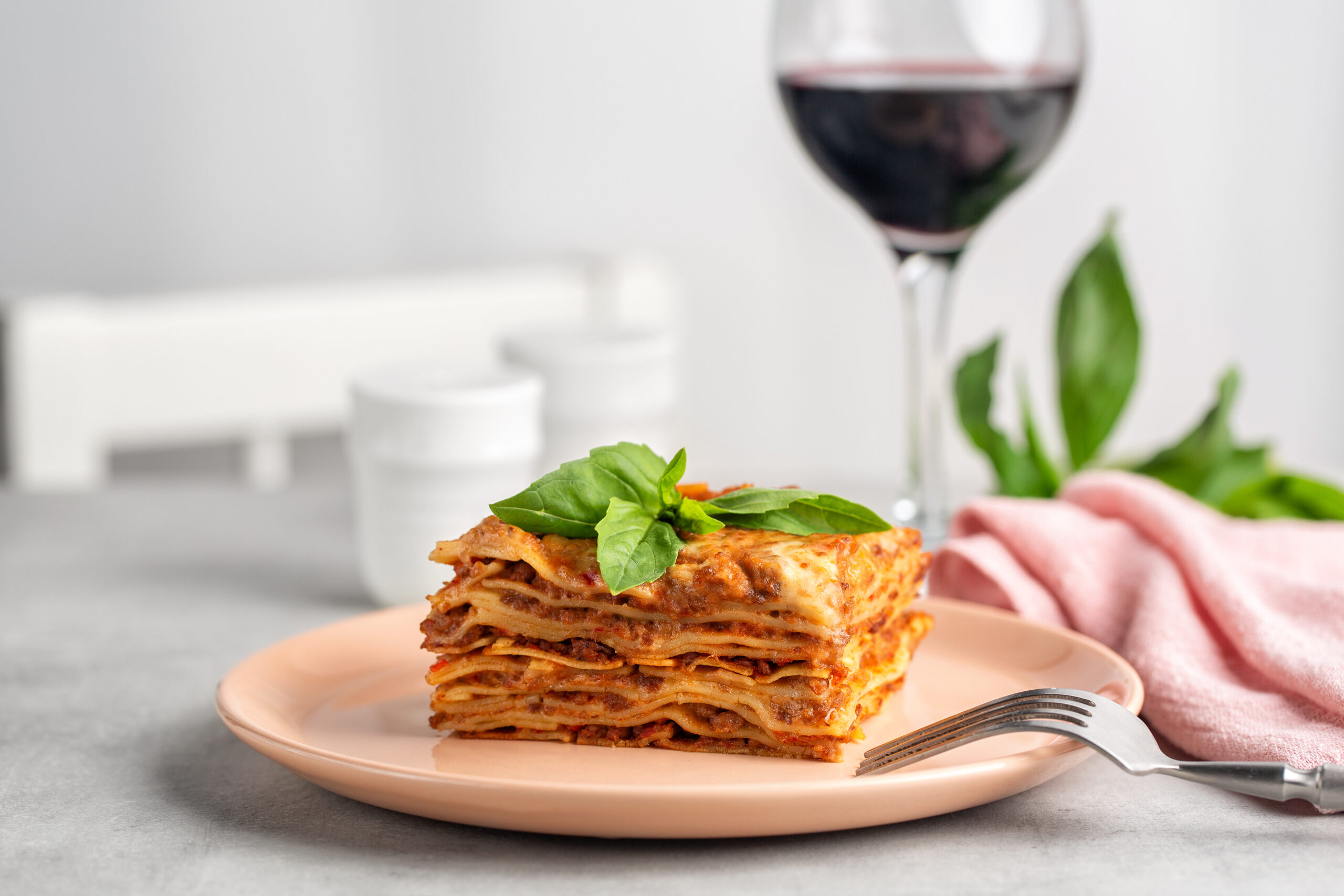
“Cuanto más fino, mejor” es nuestro mantra al colocar capas de lasaña. Este enfoque se centra en el arte de las capas finas, que son clave para una lasaña bien estructurada y cocida de manera uniforme.
Intenta esparcir la salsa, la mezcla de ricotta y la carne de manera más fina en cada capa. Esto crea un sabor más equilibrado y una cocción más uniforme.
Además, las capas más delgadas significan que puedes apilar más, creando una deliciosa complejidad en el sabor con cada bocado. También ayuda a prevenir humedades indeseadas.
Evitar los desbordamientos
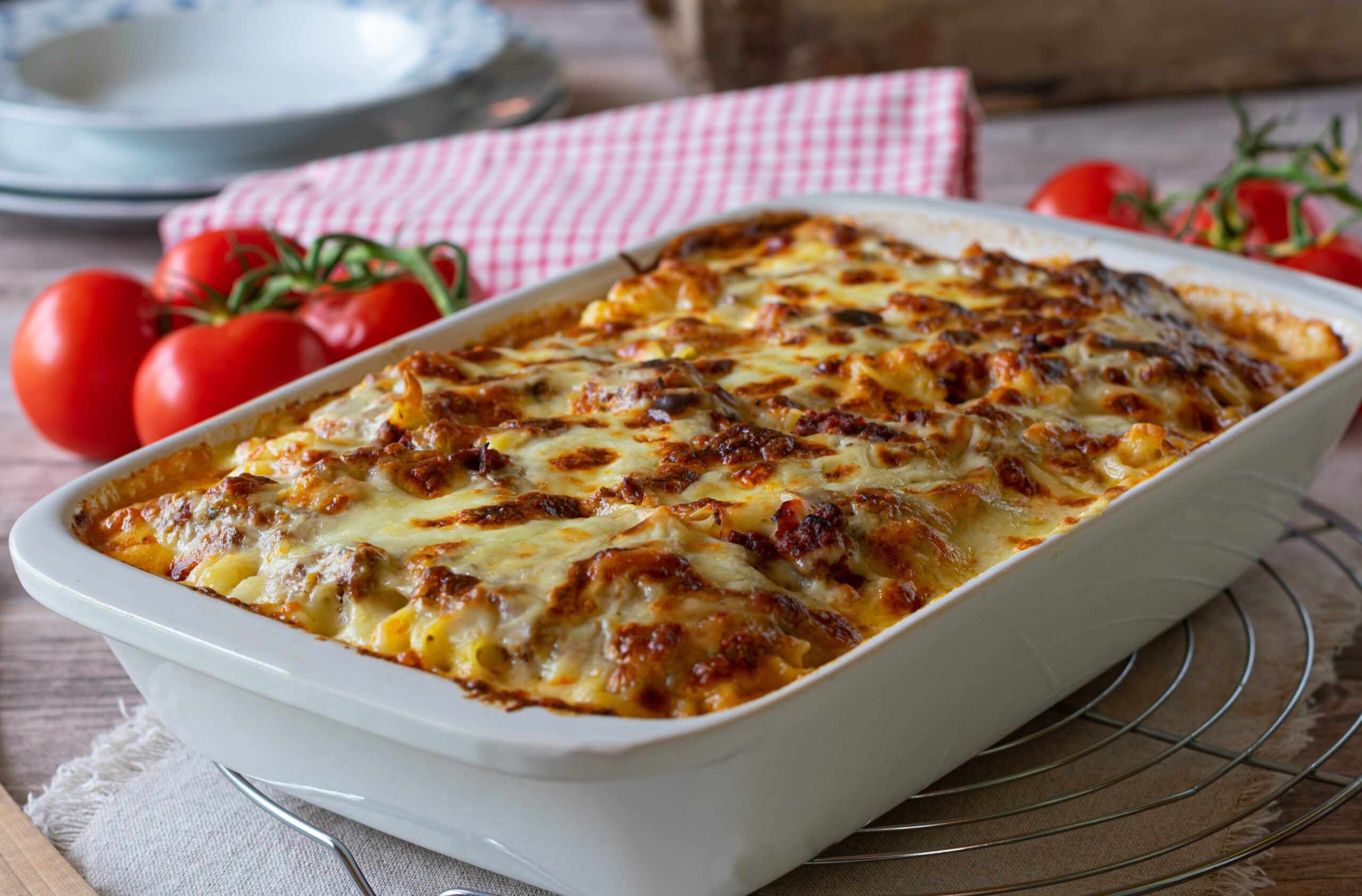
Para mantener su cocina libre de desastres, no olvide proteger su horno contra desbordamientos. Coloque su plato de lasaña en una bandeja para hornear más grande antes de meterlo en el horno.
Este ingenioso truco atrapa cualquier salsa que intente escaparse, ahorrándote la temida limpieza de la rejilla del horno más adelante. Es como una red de seguridad.
Entonces, continúa y coloca esos ingredientes en capas, ¡solo asegúrate de estar preparado para la fiesta de burbujas! La clave es cocinar de forma inteligente y disfrutar del festín sin ensuciar.
Cuidar los bordes
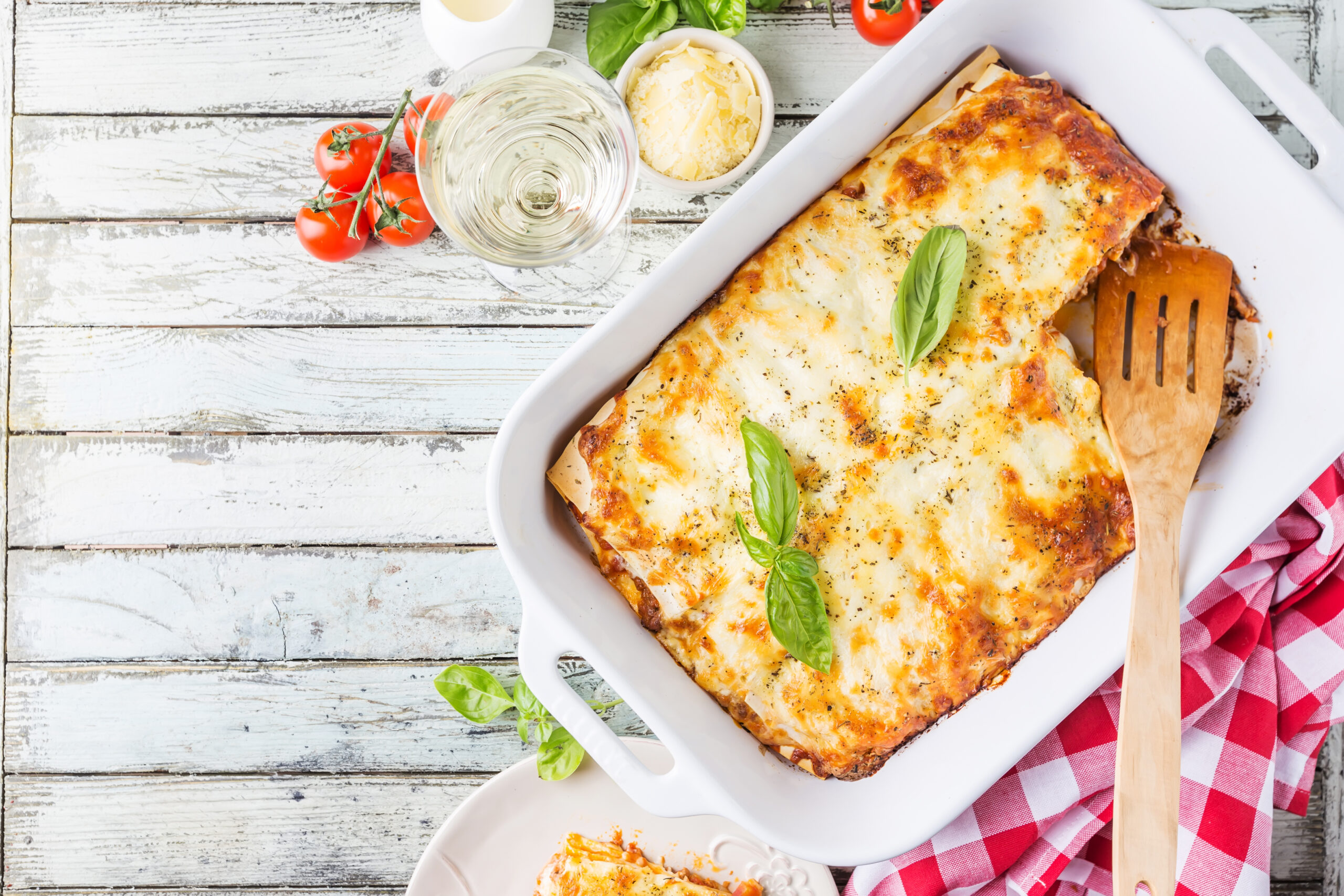
Cuidar los bordes de tu lasaña es como darle un poco de cariño a tu plato para que no termine con esos trozos duros y masticables con los que nadie quiere lidiar.
Cuando coloques capas, especialmente con los componentes de salsa y queso, asegúrate de que lleguen hasta los bordes. Cada fideo necesita un poco de amor.
De esta manera, esos fideos del borde no se secarán ni se endurecerán mientras se hornean. ¡Solo un poco de cuidado en los bordes garantiza que cada rebanada sea tan perfecta como la siguiente!
Las hierbas
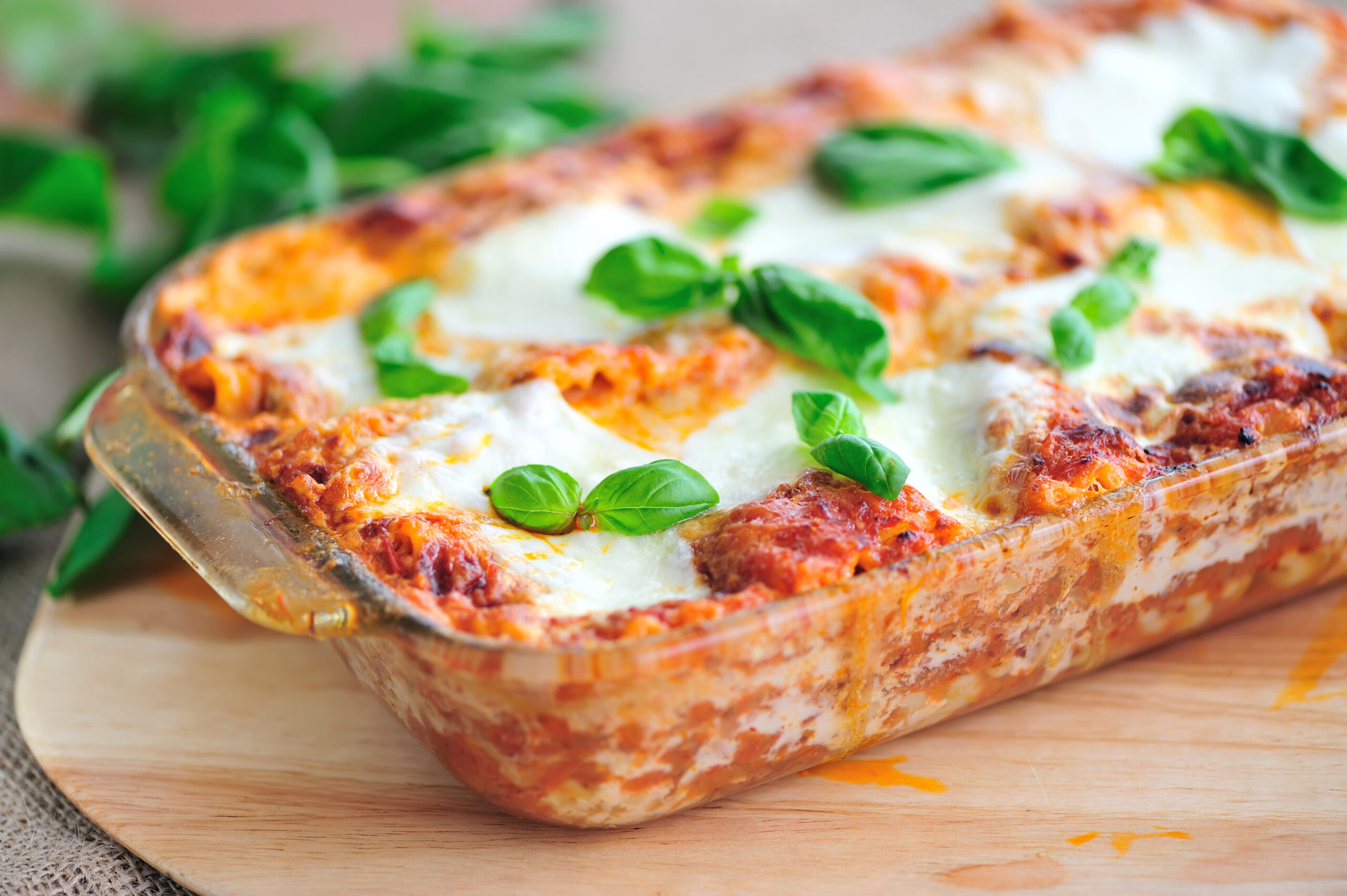
Cuando domines cómo colocar lasaña en capas, no olvides el paso final pero crucial: una pizca de hierbas frescas justo antes de servir. No es sólo estético.
Se trata de infundir a tu plato una explosión de sabor que complemente cada capa. El perejil o la albahaca frescos son los complementos perfectos para cualquier obra maestra de lasaña.
Las hierbas adecuadas pueden hacer que su plato pase de bueno a gourmet con solo una pizca. Es un truco simple que marca una gran diferencia.
Rienda suelta a la creatividad
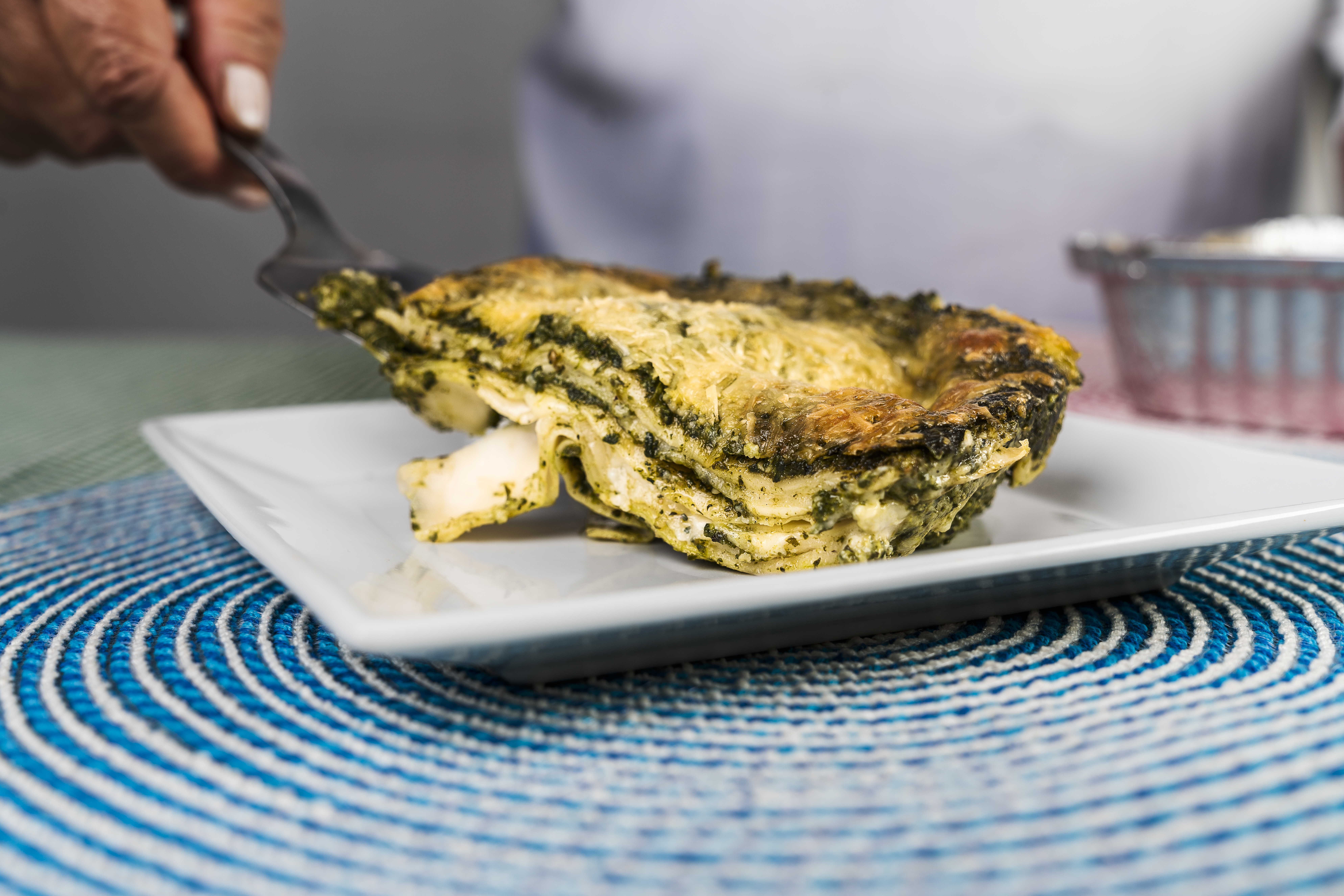
Tomarse una licencia creativa con tu lasaña significa romper con el molde tradicional de marinara y mozzarella y divertirte con tus ingredientes. ¡Es tu plato!
¿Por qué no añadir un poco de pesto a la capa de ricotta para darle un toque de sabor a hierbas? ¿O agregar algunos tomates secados al sol para darle un toque picante?
Experimenta con diferentes especias, quesos, salsas y proteínas. ¡Cada adición única que incorporas hace que tu lasaña no sea solo una comida, sino una obra maestra deliciosa!
Conclusión
Y ahí lo tienes: 20 consejos innovadores para preparar capas de lasaña como un profesional. Recuerde, el secreto de una lasaña deliciosa está en las capas, así que no tema ser creativo y experimentar con diferentes combinaciones.
Ya sea que esté cocinando para una ocasión especial o simplemente dándole vida a su rutina de cena entre semana, estos consejos lo ayudarán a preparar una lasaña realmente inolvidable. ¡Ahora, toma tu delantal y comencemos a ponernos capas!
